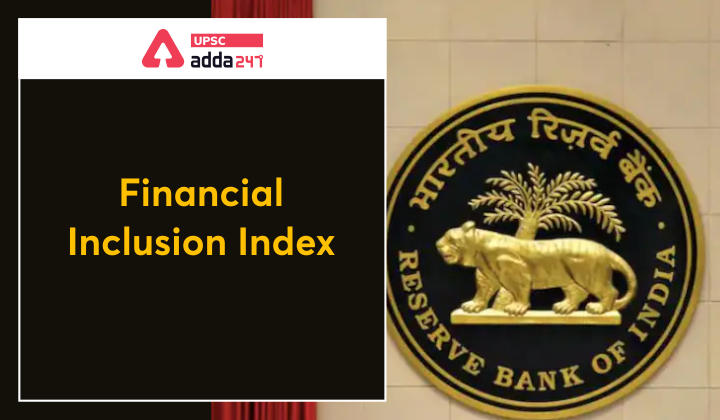Table of Contents
Relevance
- GS 3: Indian Economy and issues relating to planning, mobilization, of resources, growth, development and employment.
Context
- Reserve Bank of India (RBI) has introduced the Financial Inclusion Index (FI-Index) to capture the extent of financial inclusion in the country.
Key points
- The annual FI-Index for the period ending March 2021 is 53.9 as against 43.4 for the period ending March 2017.
- It will be published in July every year.
- The Index has been conceptualized as a comprehensive index incorporating details of banking, investments, insurance, postal, and the pension sector in consultation with government and respective sectoral regulators.
- It captures information on various aspects of financial inclusion in a single value ranging between 0 and 100, where 0 represents complete financial exclusion and 100 indicates full financial inclusion.
- It comprises three broad parameters
- ease of access (35%),
- availability and usage of services (45%),
- quality of services (20%),
- The index is responsive to all the three parameters and comprises a total of 97 indicators.
- A unique feature is the quality parameter, which captures the quality aspect of financial inclusion as reflected by financial literacy, consumer protection, and inequalities and deficiencies in services.
- The Index has been constructed without any ‘base year’ and as such it reflects cumulative efforts of all stakeholders over the years towards financial inclusion.

Get free video for UPSC CSE preparation and make your dream of becoming an IAS/IPS/IRS a reality
Challenges in financial inclusion
- There are three broad challenges in improving the financial inclusion infrastructure in India. They are
- identification of the customer,
- reaching the last mile, and
- providing relevant, affordable and safe products.
What does the index infer?
- Digital identity through Aadhar card, along with the proliferation of mobile phones with new payment systems, have addressed the first two challenges of access and usage to a large extent.
- The third challenge, i.e., quality, requires both demand and supply side interventions.
- Opening of Pradhan Mantri Jan Dhan Yojana accounts has enabled millions to have access to financial services and it has addressed the supply side issue to a considerable extent.
- However, The FI-Index of 53.9, however, indicates that 46.1 per cent of the population are still financially excluded.
- It is worrying as several steps have been initiated by both the government and the RBI to undertake financial inclusion. These steps include
- launch of the Pradhan Mantri Jan Dhan Yojana for unbanked sections of society,
- digital payment revolution, and
- entry of a host of players in the insurance and mutual fund segments over the last couple of years.



 TSPSC Group 1 Question Paper 2024, Downl...
TSPSC Group 1 Question Paper 2024, Downl...
 TSPSC Group 1 Answer key 2024 Out, Downl...
TSPSC Group 1 Answer key 2024 Out, Downl...
 UPSC Prelims 2024 Question Paper, Downlo...
UPSC Prelims 2024 Question Paper, Downlo...




